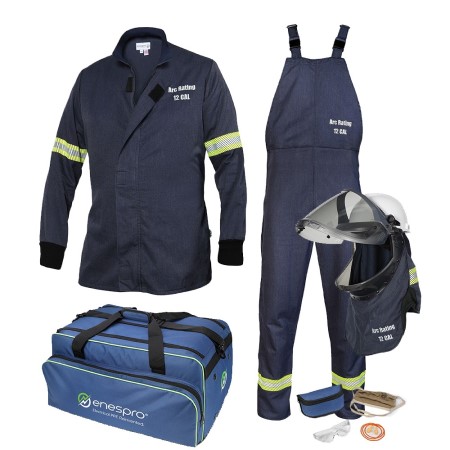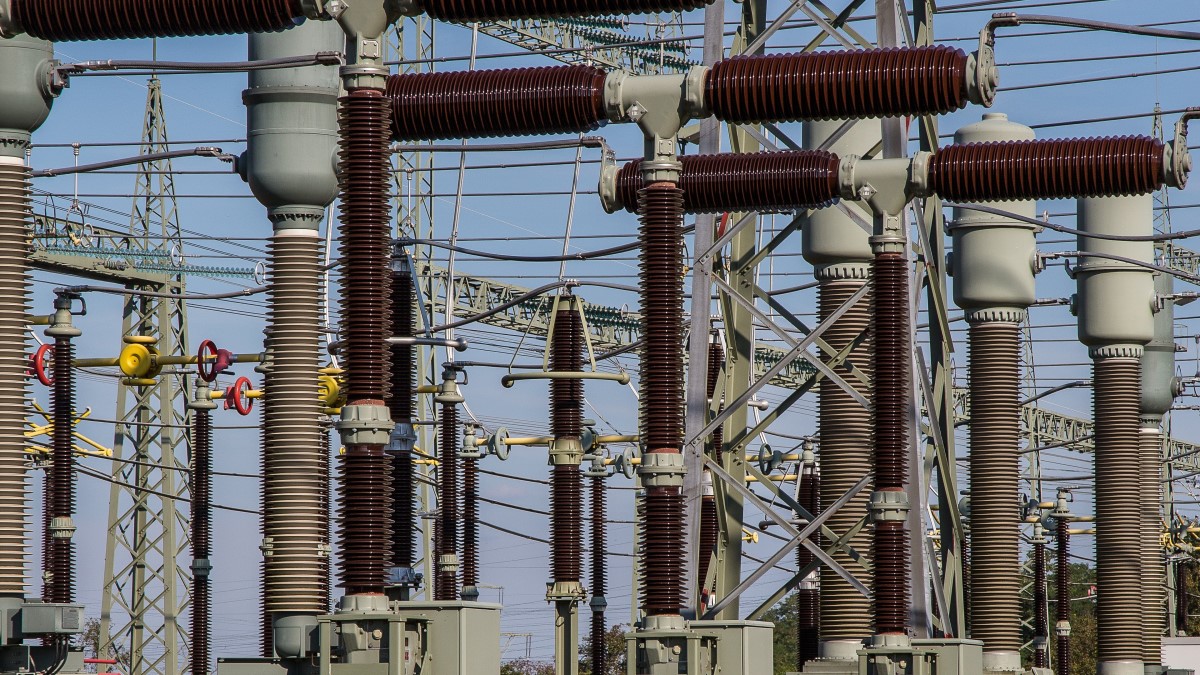Arc flash events are one of the most serious and potentially fatal hazards faced by electricians and other tradespeople who work with or near energized electrical equipment and components. Arc flash accidents can result in life-altering injuries (including hearing loss, eye damage or blindness, lung damage, nerve damage, cardiac arrest, and severe disfiguring burns), as well as death. In the U.S. alone, there are more than 30,000 arc flash incidents a year, resulting in several thousand hospitalizations in burn centers, and over 400 fatalities annually.
The intense heat, bright light, and pressure generated by an arc flash can also cause significant damage to equipment and facilities. For many businesses, the direct and indirect costs of a single arc flash incident exceed 5 million dollars.
Protecting personnel from electrical hazards like arc flash involves a multi-faceted approach that includes arc flash mitigation strategies that lessen the potential for an arc flash event and properly selected personal protective equipment (PPE).
What is an Arc Flash?
When there is a fault in an electrical system (such as a short circuit or loose, broken wire), an arc flash can happen in an instant and result in severe injuries and loss of human life.
An arc flash is a sudden and explosive release of energy from an electrical system that occurs during certain types of arc fault. Arc flash occurs when a flashover of electric current leaves its intended path and travels through the air from one conductor to another or between a conductor and the ground. This results in the release of electrical energy that ionizes the surrounding air and produces a substantial amount of intense light and radiant heat.
The extreme heat and light of an arc flash can cause damage to equipment and facilities that require significant downtime and expensive repairs. The greatest risk posed by an arc flash event, however, are the serious injuries, such as third-degree burns, and fatalities that may occur.
A high-voltage arc can also produce a considerable pressure wave blast that has the potential to cause additional damage to nearby equipment and personnel.
Common Arc Flash Hazards
The energy of an arc flash has the power to instantly vaporize metal in equipment and can heat the air to temperatures as high as 35,000 °F (which is roughly 3.5 times hotter than the surface of the sun). The high temperatures of an arc flash can burn skin and ignite clothing. Arc flash burns are common at a distance of 10 feet. According to NTT Training, “Staged tests have shown temperatures of up to 437 degrees Fahrenheit on the hands and neck of an individual standing at a distance of 10 feet from an arc blast.” The intense, ultraviolet light produced by an arc flash can also cause temporary or permanent blindness.
During an arc flash, the sudden release of electrical energy can result in the rapid expansion of air, gases, and other materials (such as copper) involved in the event. This expansion results in the creation of a pressure wave (known as an arc blast), which may also cause serious injuries and equipment damage.
An arc blast is a forceful pressure wave from an arc flash event that can propel debris, molten metal, and hot gases at high velocities. An arc blast may be forceful enough to throw workers several feet across the room or propel flying debris that can cause lacerations and fractures. An arc blast can also release various contaminants, such as toxic gases, that can lead to lung damage and respiratory issues.
An arc flash event also produces loud sound that can reach well over 140 decibels which may cause permanent hearing damage.
Arc Flash Causes & Exposure Risk
While arc flash incidents in the workplace can occur even in small office environments, they are most common among workers who are directly involved in installing and/or maintaining electrical systems and equipment. Electricians, electrical engineers, linemen and utility workers, energy testing technicians, maintenance personnel, and others who work with or near energized electrical components face the hazards of arc flash events. Arc flash incidents are especially prevalent in power plants, manufacturing plants, mines, construction sites, and data centers. Workers who build and repair electric vehicles are also at high risk of encountering arc flash at work.
While arc flashes are often associated with high-voltage equipment, they can also occur in smaller switchboards and electricity supply pillars. An arc flash event can be triggered by several factors including equipment or insulation failure, corrosion of electrical equipment, buildup of moisture or dust, improper work procedures, and human error. According to Industrial Safety & Hygiene News, “An arc flash may be caused by a tool, rodent or other element in a breaker or service area, that could compromise the distance between energized components. Incidents often occur when personnel fail to ensure that the equipment has been properly de-energized.”
The 4P model for arc flash hazard management (Predict, Prevent, Protect, Publish) can help mitigate the substantial risks associated with arc flashes. This includes conducting an arc flash hazard analysis before performing energized electrical work and using specialized PPE as outlined in safety standards like NFPA 70E. Arc flash rated clothing and personal protective equipment serves as the last line of defense against the thermal effects and other hazards of an arc flash event.
Understanding Arc Flash Risk & Determining Protective Measures
Originally developed at OSHA’s request, NFPA 70E (Standard for Electrical Safety in the Workplace) contains electrical safety guidelines to help companies and workers avoid arc flash incidents, injuries, and fatalities. NFPA 70E is published by the National Fire Protection Association and should be consulted by U.S. businesses seeking to comply with OSHA 1910 Subpart S (for general industry) or OSHA 1926 Subpart K (for construction), which address electrical safety requirements.
According to NFPA 70E, electrical equipment that is likely to be adjusted or maintained while energized and electrical equipment operating at 50 volts or more must be evaluated for arc flash and shock protection.
If work cannot be performed on a de-energized system, and energized work is permitted, an arc flash hazard analysis or arc flash risk assessment must be conducted to identify arc flash hazards and estimate the likelihood of severe injuries. An arc flash hazard analysis will also determine the additional protections needed for a given electrical system/installation, including engineering controls such as fault-current limiting devices, and specialized PPE, such as flame resistant (FR) clothing, head/eye/ear protection, and insulated gloves with protectors.
An arc flash hazard analysis is key to minimizing the risk of arc flash incidents and injuries in the workplace. An arc flash hazard analysis helps workers understand the maximum amount of energy they could be exposed to when interacting with a piece of equipment and helps determine safe approach distances as well as the type of arc-rated FR clothing and other PPE needed for specific tasks. Arc-rated clothing is made from flame-resistant materials like Kevlar and Nomex. An arc rating indicates the amount of heat from an electric arc that a FR material can block before the onset of second-degree burns.
An arc flash hazard analysis should be updated (at minimum) every five years or whenever there is a major modification or renovation to the electrical system. Upon completion of a new arc flash hazard analysis, arc flash labels should be affixed to all pieces of electrical equipment (including energized switchboards, panel boards, control panels) that pose an arc flash risk. Arc flash labels help remind workers to wear proper protective gear before entering areas with potential arc flash hazards. These warning labels contain information that’s crucial for employee safety such as arc flash boundary and available incident energy and the corresponding working distance, or the arc flash PPE category level.
Arc flash labels should always contain information to help qualified workers select proper PPE (such as arc flash suits, arc flash resistant head and face protection, insulated gloves, and other protective gear) to wear before performing specific tasks. To learn how to select appropriate arc flash clothing and other PPE, check out our Guide to Arc Flash Apparel.
Arc Flash PPE: The Last Line of Defense Against Arc Flash Hazards

Because arc flash accidents are so deadly and costly to employers and their personnel, safety procedures (like lockout/tagout), insulated tools (designed to minimize the risk of shock and arc flash), and arc flash PPE (including arc-rated FR clothing) should be used to reduce arc flash incidents and injuries.
While properly selected and fitted PPE can be used to reduce serious arc flash injuries and fatalities when working on or near electrical systems, PPE should always remain the last line of defense. The best way to prevent arc flash injuries is to prevent arc flash incidents. This means de-energizing equipment before performing work. When it is not possible to de-energize electrical equipment, find ways to reduce incident energy levels before assigning work. Perform as much work as possible remotely via the use of specialized equipment such as remote racking systems.
While arc flash mitigation methods are essential for worker safety, the reality is that de-energized work is not always possible (and in many instances, de-energizing equipment actually poses the risk of arc flash and electrical shock). Adequate PPE should always be worn when voltage testing or de-energizing electrical equipment! Because arc flash events are too common and dangerous, and have too many different causes, businesses need to implement every possible protection. That’s why properly selected PPE is such a crucial component of an effective arc flash safety program.
Training workers on how to understand arc flash risks and select arc-rated clothing and PPE for specific tasks is also key to arc flash hazard reduction. Employees working on or near electrical equipment need comprehensive training and education to understand the risks associated with arc flash, learn how to read and interpret arc flash warning labels, and practice selecting and using appropriate PPE. Such training is essential for arc flash safety and prevention and helps ensure compliance with NFPA 70E and OSHA regulations.
Save What Matters Most with Quality Arc-Rated Clothing & PPE
Scott Margolin, Co-Chairman of The Partnership for Electrical Safety, recently wrote that, “Half or more of all commercial and industrial electrical workers in the U.S. (500,000 or more) still do not have arc flash PPE despite a standard (70E) that has addressed arc flash for over twenty years.”
Providing head-to-toe arc-rated clothing and PPE to workers at risk of arc flash can help prevent serious arc burn injuries and fatalities. According to Incident Prevention magazine, “A somewhat dated study by the American Burn Association found that almost all arc-flash-related fatalities in recent times have been due to the ignition of garments that were not arc-rated. […] Based on data from arc flash accident investigations, arc-rated clothing decreases the extent of the injury and, when adequately selected, does not cause burn injuries.”
In addition to decreasing the amount and severity of arc flash-related injuries in the workplace, PPE for arc flash protection can also help businesses stay compliant with OSHA regulations for electrical safety and avoid costly fines.
The importance of arc flash PPE as part of a comprehensive arc flash safety program should not be underestimated. As the last line of defense against life-threatening and life-altering arc flash injuries, durable, comfortable, and compliant PPE is always worth the cost.
Protect your invaluable workers from deadly arc flash injuries with innovative, award-winning and USA-made arc flash PPE from Enespro!
- Check out Enespro case studies
- Browse Metron’s collection of arc flash resistant protective gear and other PPE Kits
- Or fill out the form below to set up a consultation with a safety specialist today!
